Akash Garg
|
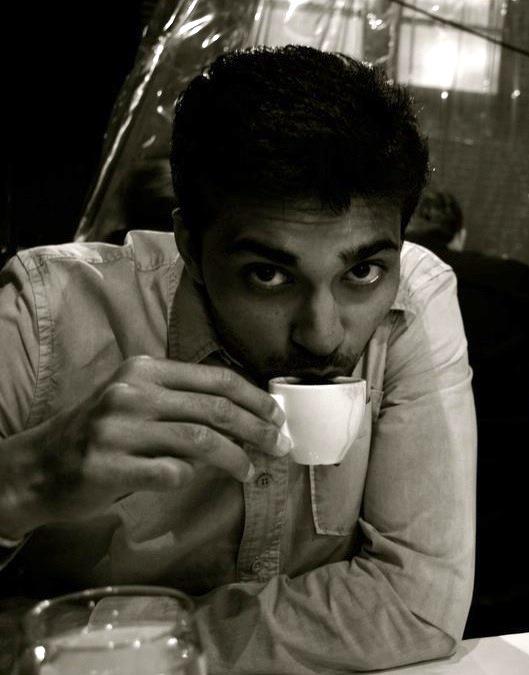 |
|
PhD Student
Contact Info:
Computer Science Dept.
Columbia University
New York, New York 10027
|
Vox: 212.939.7076
Net: akg2110 "at" columbia "dot" edu
|
|
Research Statement
I am interested in exploring how geometric insights can be used to develop computational models for physical simulation, computer animation, and geometry processing.
|
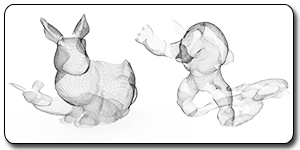
|
|
Wire Mesh Design
Akash Garg, Andrew Sageman-Furnas, Bailin Deng, Yonghao Yue, Eitan Grinspun, Mark Pauly, Max Wardetzky.
SIGGRAPH 2014, July 2014.
Abstract:
We present a computational approach for designing \emph{wire meshes}, i.e., freeform surfaces composed of woven wires arranged in a regular grid. To facilitate shape exploration, we map material properties of wire meshes to the geometric model of \emph{Chebyshev nets}. This abstraction is exploited to build an efficient optimization scheme. While the theory of Chebyshev nets suggests a highly constrained design space, we show that allowing controlled deviations from the underlying surface provides a rich shape space for design exploration. Our algorithm balances globally coupled material constraints with aesthetic and geometric design objectives that can be specified by the user in an interactive design session. In addition to sculptural art, wire meshes represent an innovative medium for industrial applications including composite materials and architectural fa\c{c}ades. We demonstrate the effectiveness of our approach using a variety of digital and physical prototypes with a level of shape complexity unobtainable using previous methods.
[PDF (high-res)]
[PDF (low-res)]
|
|
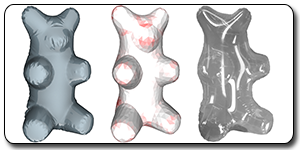
|
|
Designing Inflatable Structures
Melina Skouras, Bernhard Thomaszewski, Peter Kaufmann, Akash Garg, Bernd Bickel, Eitan Grinspun, Markus Gross.
SIGGRAPH 2014, July 2014.
Abstract:
We propose an interactive, optimization-in-the-loop tool for
designing inflatable structures. Given a target shape, the user
draws a network of seams defining desired segment boundaries in
3D. Our method computes optimally-shaped flat panels for the
segments, such that the inflated structure is as close as possible
to the target while satisfying the desired seam positions. Our
approach is underpinned by physics-based pattern optimization,
accurate coarse-scale simulation using tension field theory,
and a specialized constraint-optimization method. Our system is fast
enough to warrant interactive exploration of different seam layouts,
including internal connections, and their effects on the inflated
shape. We demonstrate the resulting design process on a varied set of
simulation examples, some of which we have fabricated, demonstrating
excellent agreement with the design intent.
Coming Soon.
|
|
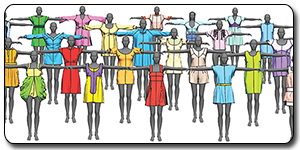
|
|
Parsing Sewing Patterns into 3D Garments
Floraine Berthouzoz, Akash Garg, Danny Kaufman, Eitan Grinspun, Maneesh Agrawala.
SIGGRAPH 2013, July 2013. pp. 85:1-85:12.
Abstract:
We present techniques for automatically parsing existing sewing patterns and converting them into 3D garment models. Our parser takes a sewing pattern in PDF format as input and starts by extracting the set of panels and styling elements (e.g. darts, pleats and hemlines)
contained in the pattern. It then applies a combination of machine
learning and integer programming to infer how the panels must be
stitched together to form the garment. Our system includes an
interactive garment simulator that takes the parsed result and generates
the corresponding 3D model. Our fully automatic approach correctly
parses 68% of the sewing patterns in our collection. Most of the
remaining patterns contain only a few errors that can be quickly
corrected within the garment simulator. Finally we present two
applications that take advantage of our collection of parsed sewing
patterns. Our garment hybrids application lets users smoothly
interpolate multiple garments in the 2D space of patterns. Our sketch-based search
application allows users to navigate the pattern collection by
drawing the shape of panels.
[PDF]
[Video]
|
|
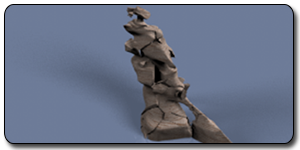
|
|
Seamless Fracture in a Production Pipeline
Akash Garg, Kyle Maxwell.
SIGGRAPH 2010 Talks, pp. 23:1--23:1
Abstract:
To alleviate the laborious task of generating volumetric fracture pieces by hand while preserving the integrity of the artistically modeled shape, we develop a practical, robust, and effective solution for artistically directed volumetric fracture. Unlike previous approaches our procedural fracture system maintains intrinsic attributes (e.g., texture coordinates), preserves discontinuities such as texture seams, and generates procedurally fragmented "chunks" with seamless boundaries. The key steps in our fracture pipeline are: robust scan-conversion from an input geometry, generation of fragmented fracture pieces with artistic control, and high fidelity mesh generation of the disjoint fracture fragments.
[PDF]
|
|
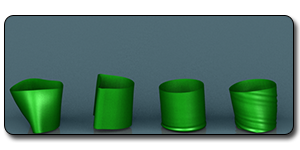
|
|
Cubic Shells
Akash Garg, Eitan Grinspun, Max Wardetzky, Denis Zorin.
Symposium on Computer Animation, pp.91-98, 2007.
Abstract:
Hinge-based bending models are widely used in the physically-based animation of cloth, thin plates and shells. We propose a hinge-based model that is simpler to implement, more efficient to compute, and offers a greater number of effective material parameters than existing models. Our formulation builds on two mathematical observations: (a) the bending energy of curved flexible surfaces can be expressed as a cubic polynomial if the surface does not stretch; (b) a general class of anisotropic materials—those that are orthotropic—is captured by appropriate choice of a single stiffness per hinge. Our contribution impacts a general range of surface animation applications, from isotropic cloth and thin plates to orthotropic fracturing thin shells.
[PDF]
[bib]
[Video]
|
|
Personal
You can find out more about me, here.
|
Copyright 2005-Present Akash Garg
|
|





